Menu
You can manage your membership and billing method by clicking here
Terms of Service
Privacy Policy
Copyright © 2025 Office of Immigration Australia, a private company registered in Australia. All Rights Reserved.

Checking membership status...
 EXCLUSIVE MEMBERS ONLY ACCESS
EXCLUSIVE MEMBERS ONLY ACCESSTo access this month’s edition & Member’s only resources, enter your registered email address.



Exclusive Australian Immigration News, Updates & Opportunities
May 2023
This bulletin is for members only, and provides our members with month to month updates on Australian immigration policy changes and consequential opportunities. Opportunities are found via federal and state government policy shifts for the demand and supply for certain occupations.
This bulletin will keep you up to date so that you do not have to employ expensive immigration lawyers to provide you with monthly research.
May 2023 has arrived… and there is more good news on the horizon with Australia now set to see its biggest-ever immigration surge with government figures revealing 650,000 migrants are predicted to arrive this financial year and next! This population explosion is expected to ease workforce shortages which have caused chronic job vacancies around the country, as employers continue to struggle in finding staff to fill positions.
This breaking news once again reaffirms that 2023 & 2024 will be one of the most significant moments in Australian immigration history!
Also in this month’s bulletin, we discuss how to best obtain a partner visa under Australian immigration law!
In this month’s ‘Federal News‘, the crippling backlog of 1 million unprocessed visas has been almost halved in nine months after 600 additional processing staff were engaged to help drive down wait times and provide relief to worker-starved employers.
In other federal news, the Australian government is working on business-friendly solutions to critical worker shortages, including making it easier for multinational companies to bring in overseas executives.
In this month’s ‘State News’, skilled workers residing offshore remain eligible to be considered for ALL State and Territory nominations! Please view the State Migration Section of this month’s bulletin for all State and Territory program updates and opportunities available!
In this month’s ‘Economic News’, the chief economist of the ‘Regional Australia Institute’ says the federal government needs to ensure enough overseas migrant populations are flowing into non-metropolitan areas, as recent data now shows that regional Australia reached record high job vacancies in late 2022.
Also in this month’s economic news, we take a look at the beautiful city of Mount Gambier and discuss why more migrants are moving to this picturesque outer regional city!
Finally, there’s more good news on the horizon, as Australia could soon be saying goodbye to the traditional 5-day work grind in exchange for a shorter 4-day work week!
In this month’s ‘Student News’, international students are rushing back to Australia with numbers from the January-to-March arrival period nearly 150 per cent higher this year compared to 2022! In other student news, we also discuss the unexpected degrees leading to high salaries for international students!
All this and much more in the May issue of The Australian Immigration Bulletin! Let’s take a deeper look at what has happened so far and what is planned for the remainder of May 2023 in Australian Immigration, so that you can start planning!
In case you missed it…
We are excited to announce a new benefit now available which allows all our member’s FREE access to an online platform and course to practice, study and improve their English and IELTS score. The IELTS exam is one of the key recommended exams you will need to take in order to Apply for Skilled Migration to Australia and the better your results, the higher points you will get when submitting an expression of interest. The advanced English and IELTS platform will allow all members to practice Mock IELTS Exams, learn cutting edge tips and gain a greater understanding of how to achieve a Band 7+.
We are also excited to announce “ImmiConnect” which is now available in the member’s area. ImmiConnect is the Office of Immigration Australia’s Employer Sponsored program which allows overseas workers to receive job interview invitations from Australian employers, when job opportunities come available.
The program aims to bring globally mobile, highly-skilled and specialised individuals to Australia who can fill critical areas of need.
ImmiConnect is exclusive to active Australian Immigration Bulletin Members only. You must be a current Australian Immigration Bulletin Member to be eligible to receive job interview invitations.
So if you are interested in receiving these invitations, please sign up for FREE by Clicking “ImmiConnect” and adding your name and email address.

*2 WINNERS DRAWN every month. May 2023 – September 2023. (10 winners/prizes in total)
There is always a winner, and the next one could be you!
The winners of the May 2023 Immigration Prize Giveaway were drawn at 10am AEST on 1st May 2023.

Congratulations to the May 2023 winners! You have been sent a confirmation email with details on how to claim your prize!
The next 2 lucky winners will be drawn at 10am AEST on 1st June 2023.
As of 6th July 2022, people entering Australia do NOT need to provide evidence of Covid-19 vaccination status. Additionally, people leaving Australia will NOT be asked to provide evidence of their vaccination status. Unvaccinated visa holders do NOT need a travel exemption to travel to Australia. It is however important to remember that airlines, vessel operators and other countries may have specific requirements that travelers need to comply with.
Please see the list of vaccines that are recognised by the Australian government for travel purposes here.
This Bulletin and its contents is for general information purposes only and should not be used as a substitute for consultation with professional advisors.
As legislation and travel requirements are constantly changing, we strongly recommend obtaining advice on your individual situation from a Registered Migration Agent.
Please click here to book a consultation with one of our Registered Australian Migration Agents, located in Australia.
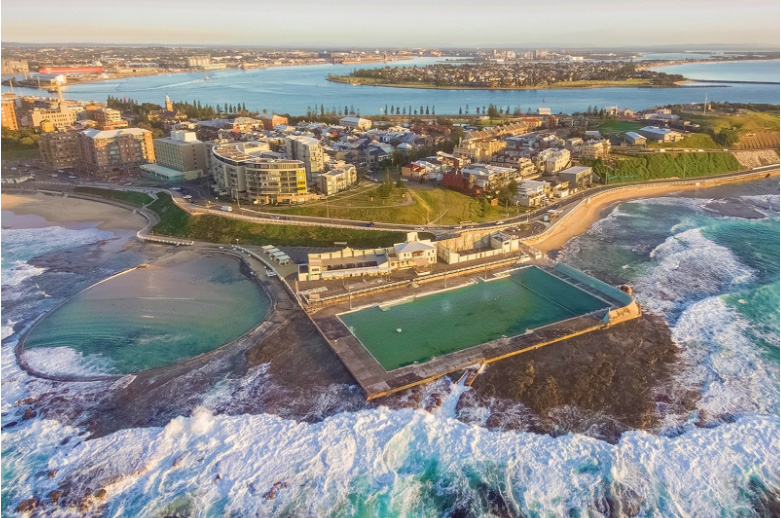
Newcastle, New South Wales
The Results of the August 2021 census were made public on 12th July 2022, and revealed that Australia has become a majority migrant nation, as the census data shows for the first time that more than 50 per cent of residents were born overseas or have an immigrant parent. Last year’s census counted nearly 25.5 million people, including 1 million new residents.
Australia’s 2022-23 Migration Program has been carefully designed to boost the social and economic outcomes that meet Australia’s needs. In fact, the migration program me was first launched in 1945 following the aftermath of World War 2. Given this long history, it is worth understanding how it works. The Australian Immigration Bulletin exists to help explain this in more detail.
As we’ve entered the 5th month of the year, join us for a look at the latest news and developments in the world of Australian Immigration!

We spoke with a skilled migrant working as a medical practitioner for the last 6 years.
Tell us about finding work
“Looking for medical jobs is not particularly difficult. Especially if you are looking at regional or rural places.
I moved from Canberra to Hobart, I just searched online for similar roles. I emailed the manager and sent my credentials, and that was it.
I have not done interviews in a while but the main mistake I remember is being unprepared.
I think I had enough information. I just did not prepare enough.”
What advice can you share with migrants seeking work in Australia?
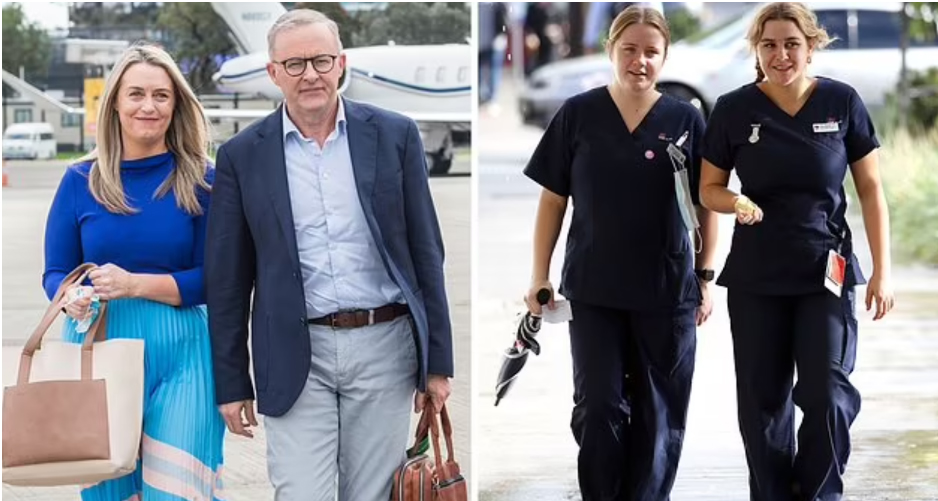
Australia is set to see its biggest-ever immigration surge with government figures revealing 650,000 migrants are predicted to arrive this financial year and next. This will ease workforce shortages which have caused chronic job vacancies where employers have struggled to find staff to fill positions.
The revised migration data comes after just 300,000 migrants touched down in the country during the three years of pandemic lockdowns and lockouts.
Treasury officials in 2019 predicted a total of 1.2million migrants would arrive in the country by the end of 2024, but that figure has now been revised down to 950,000.
The latest analysis means the country is expected to see 650,000 migrants start a new life in Australia by the end of the 2024 financial year.
At least 350,000 are predicted to settle in Australia this financial year with 300,000 more in the following 12 months.
The previous record high over two financial years was 577,000 migrants in 2008 and 2009 under Prime Minister Kevin Rudd.
The sudden surge in the population is set to deliver a budget windfall to the government with a boost in consumer spending and taxes to help economic growth.
The rapid rise in immigration will see Australia’s population pushing 27 million by June next year.
More than half of the expected migrants arrived in Australia as part of the post-Covid boom in skilled workers, international students and working holiday-makers.
In the first three months of this financial year, from July to September 2022, a record 106,000 migrants arrived in Australia.
They were part of a wave of 304,000 immigrants arriving in the country in the year to September as borders reopened after Covid restrictions shut Australia down.
It was the highest population rise since March 2009, but is set to be overshadowed by the flood of migrants now predicted in the 15 months ahead.
Jim Chalmers has revealed net overseas migration this financial year is likely to be 350,000, a 50 per cent rise on what was expected in the October budget and January’s annual population statement.
The high number of migrants, tourists and working holidaymakers is expected to boost spending, government tax take and the demand for services.
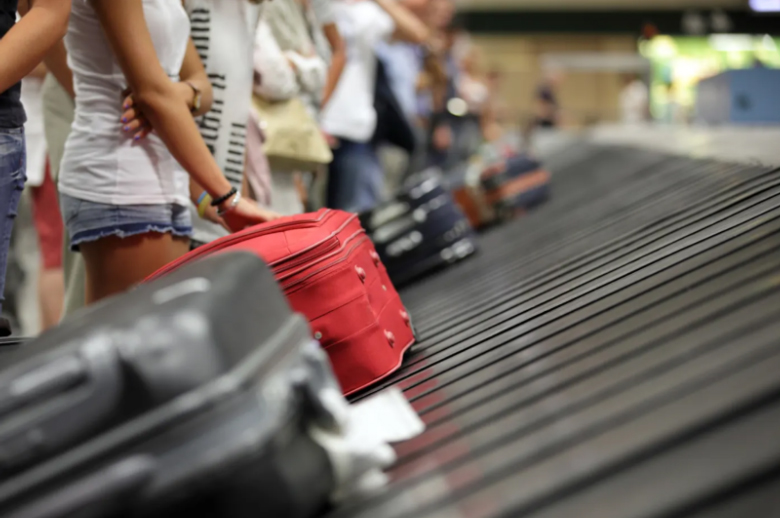
A crippling backlog of 1 million unprocessed visas has been almost halved in nine months after 600 additional processing staff were engaged to help drive down wait times and provide relief to worker-starved employers.
Wait times for short-term temporary skilled visas have fallen from about 83 days in June last year, to about 38 days this month, according to data from the federal government.
Department of Home Affairs figures show some visitor visas and working holidaymaker applications are now being processed in less than a day, with some study visas processed about 50 days from application.
Skilled permanent applicants still face wait times of up to six months, while some partner visas attract wait times of up to eight months.
Immigration Minister Andrew Giles said the backlog of unprocessed visas had been cut from 1 million in July to about 570,000, with 5.4 million temporary visas processed since Labor came to government.
Among that total is a significant number of newly arrived temporary and permanent skilled workers, as well as backpackers and workers headed to regional areas.
The backlog for skilled regional 887 visas has been halved, with last month seeing the largest number of visas processed in a single 30-day period.
Mr Giles said the federal government was working to improve visa processing, amid demands from business for a more employer-friendly system.
“The Albanese government is delivering economic stability to regional employers and families by streamlining visa processing and tripling the number of regional skilled visas and delivering jobs by processing 887 visas faster,” he said.
“We can’t fix a decade of failure overnight – but we’re getting on with the job from day one to get visas out of the in-tray and workers into the country.”
Business-friendly solutions
There are now 123,000 skilled temporary visa holders in Australia, up from about 96,000 in June.
The figures come amid a root-and-branch review of the country’s migration system, led by former public service chief Martin Parkinson, alongside University of Adelaide law professor and temporary labor migration expert Joanna Howe, and former Deloitte partner John Azaria’s.
The government is working on business-friendly solutions to critical worker shortages, including making it easier for multinationals to bring in overseas executives.
But Home Affairs Minister Clare O’Neil has conceded fixes will take time. She has promised to cut red tape, such as forcing employers to advertise jobs locally before sponsoring foreign applicants.
Employers would simply have to show they were offering to pay a prospective skilled migrant more than a certain level, at which point their visa would be approved.
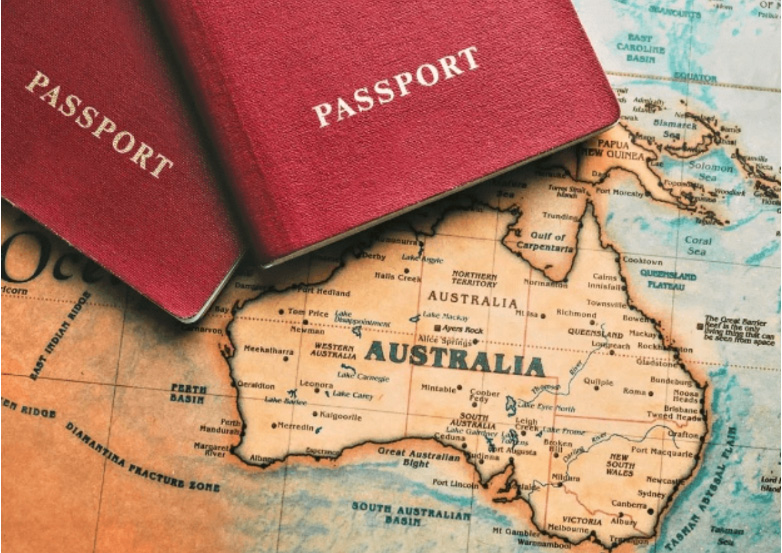
How to obtain a partner visa? Perhaps you and your partner have decided that you want to spend your life together in Australia, but how to do so under Australian immigration laws?
Under the Partner Visa Stream, an Australian spouse or de facto partner can sponsor an applicant. The sponsor must either be an Australian citizen, Australian permanent resident or an eligible New Zealand citizen, aged over 18 years old.
The Migration Act and Regulations regulates who may be able to enter Australia as well as the qualifications required. Below are the 3 types of visa options couples can consider:
You need to ensure that you fulfil the necessary requirements for a successful outcome in your application. This article explores the different types of partner visas and their requirements.
Partner Visa Offshore (309 and 100)
Partner (Provisional) Visa (309) means an applicant can apply for a partner visa in Australia even if they are residing outside Australia and only if the applicant is married or in de facto relationship with a permanent resident of Australia, an Australian citizen, or an eligible citizen of New Zealand.
The Subclass 309 visa allows the applicant to:
The visa type is temporary, but parties can convert this to a permanent resident visa through the Partner (Migrant) Visa (100). The Subclass 100 visa is a permanent visa. Parties can apply for this no sooner than 2 years after they receive grant of Subclass 309 temporary visa.
To be eligible, you:
Once the applicant obtains a Subclass 100 visa, they become eligible to:
Partner Visa Onshore (820 and 801)
If the applicant is making an application from Australia, the onshore visas are applicable. A person who is in Australia will be eligible to apply for an Onshore Temporary Visa (820) if they are married or are in a de facto relationship with an Australian citizen, a permanent Australian resident or an eligible New Zealand citizen.
The applicant must also not have had a visa cancelled or an application refused and not hold certain regional visas. An applicant will be granted a bridging visa while waiting for the processing of the Subclass 820 temporary partner visa.
Once an applicant obtains a Subclass 820 Visa, they would have the same benefits as those on a Subclass 309 Visa. Once the applicant manages to get the Onshore Permanent Visa (801), they become eligible to:
Prospective Marriage Visa (300)
Another type of partner visa is the Prospective Marriage Visa, popularly known as the “Australian Fiancée Visa”. This Visa allows your fiancée to reside with you in Australia. Such visa holders are allowed to stay in Australia for a period of 9 months and can have their visas amended after getting married.
The sponsor would need to have Australian citizenship, a permanent Australian residency status, or be an eligible New Zealand citizen. The fiancée would need to pass a character and health clearance. Both must be 18 years of age or older and be legally allowed to marry.
It is crucial to note that the law requires you both to have met personally. Hence, if you are in an online relationship, the requirement for the visa is not met.
Once approved, the fiancée will be entitled to the following privileges:
Requirements for Partner Visa
Specific requirements for each visa may vary, but generally speaking, having no debt to the Australian government, health and character requirements, and most importantly, relationship requirements have to be met.
Married applicants
You are a married applicant if your marriage is valid under Australian law and:
De facto partners
To be a de facto partner, you must be in a de facto relationship. Under the Family Law Act 1975, you and your partner are in a de facto relationship if:
As a general rule, you must be in a de facto relationship for at least 12 months immediately before applying for a visa. Time spent dating or in an online relationship might not count.
However, the 12-month requirement can be waived if the applicant shows compelling and compassionate circumstances for the grant of the visa. The 12-month requirement also will not apply if:
Proving the Relationship
You will need to produce various documents to prove your genuine relationship and shared life. Below are factors that are considered in the application for the visas. Take note that this list is not exhaustive.
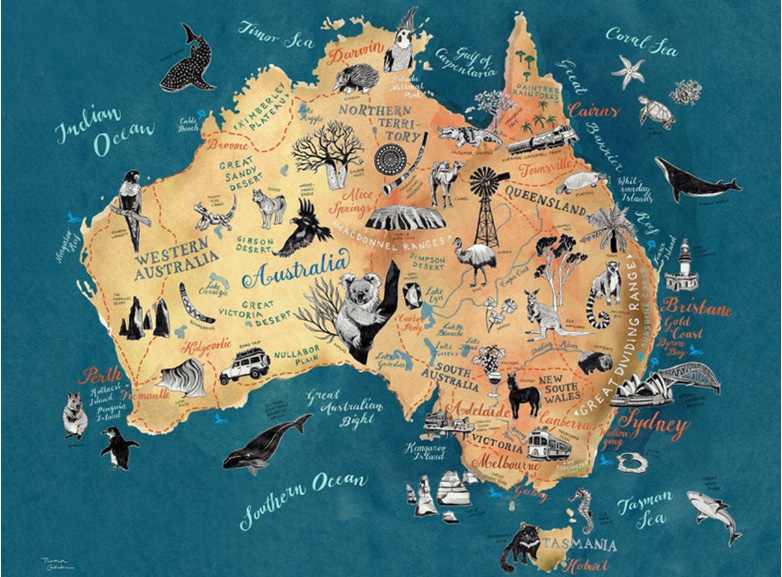
If you are interested in applying for a general skilled migration visa to Australia, it is important to have a good understanding of the skilled visa options and how the migration points test works, so that you can maximize your chances of being eligible to apply for a skilled visa.
A general skilled migration visa is an option available to skilled workers who are seeking to qualify for a skilled visa independently, or under a state or family sponsorship. It is an alternative to an employer sponsored visa.
One of the key criteria to qualify for a general skilled migration visa is the points test (a criterion that does not apply to employer sponsored visas). This is often the most challenging aspect for prospective skilled visa applicants to overcome when seeking an invitation to apply for the relevant skilled visa.
If you are considering applying for a general skilled migration program visa, an important concept to understand is the Expression Of Interest (EOI).
If you are considering applying for a general skilled migration visa, it is important to be aware that for certain visas in this visa class, you will first be required to lodge an EOI with the Department of Home Affairs (the Department) through Skill Select. The EOI is not a visa application, but rather, it is the process by which you can express your interest in applying for the relevant skilled visa (It’s important to note, that there is NO fee to submit an EOI).
This requirement applies to the following skilled visa subclasses:
Let’s take a brief look at each of these visas below:
The ‘subclass 189’ is a federal sponsored visa that grants automatic permanent residence in Australia. It is subject to nil visa conditions or obligations. For this reason, it is often considered to be the most flexible of the skilled visa options available.
A subclass 189 points-based visa allows you to live and work in any state or territory permanently.
The ‘subclass 190’ is a state/ territory sponsored permanent residence visa. It is another points-based visa for which invitations are issued throughout each month by individual states and territories. One of the benefits of applying for state nomination is that you will be granted an additional 5 points.
An important aspect to consider, which does not apply to the subclass 189 visa is that there is an added step in the application process. In this case, you must also apply for nomination approval to a state or territory government. Only upon receipt of an invitation from the relevant state or territory to which you apply can you then apply to the Department for the visa itself.
Your obligations as a subclass 190 visa holder are that you must commit to your nominating jurisdiction’s obligations and commit to residing in your nominating State or Territory for two years from visa grant.
The ‘subclass 491’ is also a points-based state/ territory (or family) sponsored visa. It is a regional visa with a term of five years. The Department issues invitations for family sponsored EOI applications only (in invitation rounds). Invitations for state sponsorship are issued by individual states and territories throughout each month. This will grant you an additional 15 points for the nomination.
Being a provisional visa, this means it provides a pathway to permanent residence in Australia with the Subclass 191 Permanent Residence (Skilled Regional) visa, subject to meeting specified requirements.
Be mindful that as a subclass 491 visa holder, you must abide by visa condition 8579, which requires you to live, work and study in a designated regional area of Australia. For migration purposes, most locations of Australia outside of major cities (Sydney, Melbourne, Brisbane, Perth, etc.) are classed as regional areas.
If your EOI is successful, you will receive an invitation to apply for the visa, as specified in the invitation letter. This then enables you to proceed with lodgment of your visa application (provided you meet all other visa lodgment and visa grant requirements).
Please note, the below State and Territory program updates is a general overview only. It does not take into account any of your personal circumstances. You must check the State/Territory information carefully to ensure you can meet all the requirements for nomination.
Australia is currently facing a shortage of skilled migrants to fill workforce demands. In response, states and territories have been easing the conditions of their visa programs to help attract skilled workers from overseas.
Below is the monthly update for some of the State and Territory opportunities available.
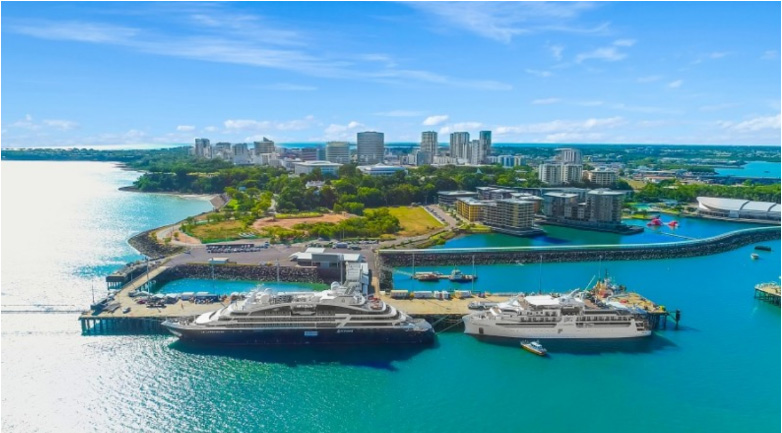
Program Status Update
People residing offshore are now eligible to be considered for Northern Territory (NT) nomination. Invitations to apply for Northern Territory nomination will be via the ranking system.
The ‘Northern Territory Offshore Migration Occupation List’ identifies the occupations in current demand in the Northern Territory. This List is important if you want to apply for Northern Territory nomination for either a:
The ‘Northern Territory Offshore Migration Occupation List’ is only applicable for those applying for NT nomination from outside Australia, under the Priority Occupation stream.
Please note: The Northern Territory government has advised that offshore applicants will generally only be offered a Northern Territory nomination for a subclass 491 visa. Subclass 190 nominations will only be offered in exceptional circumstances, such as cases where the applicant has strong connections to the NT.
The NT advises eligible applicants to apply as soon as they meet the eligibility criteria. To receive a nomination from the NT Government, you must:
Before submitting an EOI for The Northern Territory, applicants should check that they meet all eligibility requirements.
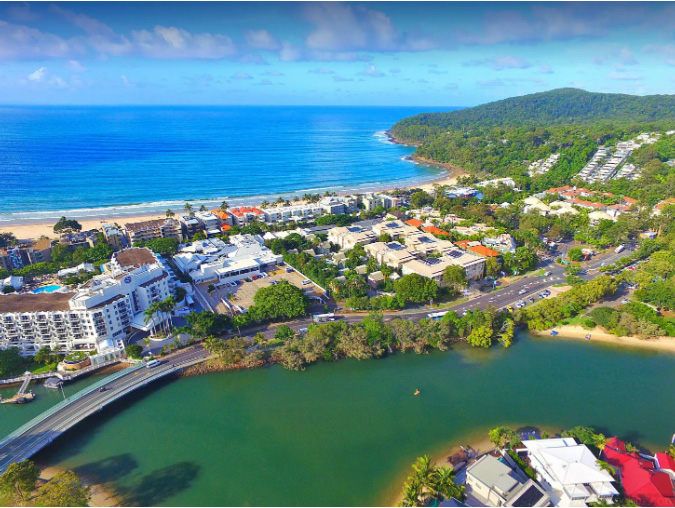
Program Status Update
To manage Queensland’s COVID recovery response, applicants currently residing offshore are now able to apply.
Depending on your occupation and situation, there are two state nomination options available for skilled migrants through Queensland.
For Queensland state nomination, prospective applicants must meet the Department of Home Affairs requirements, state-specific occupation requirements and have skills in an occupation that is available on the Queensland Skilled Occupation List.
You may undertake employment once onshore in Queensland through:
Offshore applicants meeting the minimum published requirements can now lodge a Registration of Interest (ROI).
Migration Queensland, the state government agency responsible for skilled visa nomination, has stated they will only accept a brand new EOI submitted on Skill select from 16 August 2022. Updating existing EOI’s submitted prior to 16 August 2022 will not be invited.
The agency also requests all applicants to ensure they have carefully read and understood the new criteria relevant to their stream or pathway, and that they meet the criteria before submitting an Expression of Interest (EOI).
The 2022-23 Skilled Migration Program will be open to both onshore and offshore applicants and provide pathways for skilled workers, graduates, and small business owners.
Before submitting an EOI for Queensland, applicants should check that they meet all eligibility requirements.
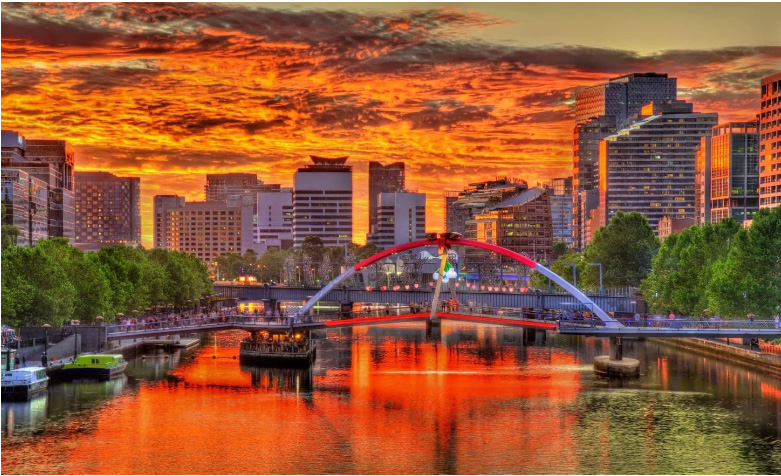
Program Status Update
Open to offshore applicants, the program provides skilled migrants with a pathway to permanent residency in Victoria. The skills that successful applicants bring to Victoria benefits employers and the broader Victorian economy.
The program provides two visa pathways.
The Skilled Nominated visa (subclass 190) is a permanent visa for skilled migrants to live and work anywhere in Victoria. The Skilled Work Regional (Provisional) visa (subclass 491) is for skilled migrants to live and work in regional Victoria and provides a pathway to permanent residency through the Permanent Residence (Skilled Regional) visa (subclass 191).
As with previous years, applicants will first need to submit a Registration of Interest (ROI) and then be selected on competitive merit to apply for visa nomination.
Both onshore and offshore applicants are eligible to submit a Registration of Interest (ROI) for both the subclass 190 and subclass 491 visas.
This is a significant change from the 2021-22 Skilled Migration Program, which did not allow applications from individuals overseas. Additionally, the new program is a great opportunity for applicants who work in a variety of occupations, particularly since the 2021-22 program was previously aimed at applicants in science, technology, engineering, mathematics and medicine (STEMM).
If you submitted a ROI during the 2021-22 program, you must submit a new ROI to be selected to apply for the 2022-23 program.
Your ROI will remain in the system for selection until it is withdrawn, selected or the program year ends. The final day to submit a ROI is Friday, 5 May 2023.
Before submitting an ROI for Victoria, applicants should check that they meet all eligibility requirements.
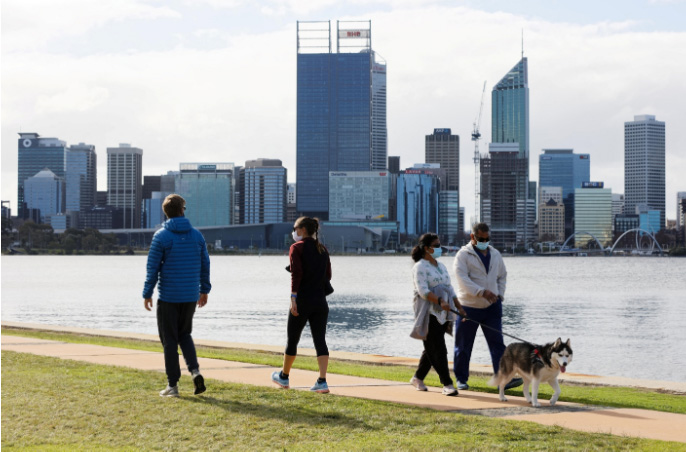
Program Status Update
People residing offshore are now eligible to be considered for Western Australia (WA) State nomination. Invitations to apply for WA State nomination will be via the ranking system.
The Western Australian Skilled Migration Occupation List identifies the occupations in current demand in Western Australia. This List is important if you want to apply for Western Australia nomination for either a:
Western Australia has increased occupations eligible for skilled migration by roughly 60 per cent for the 2022-23 program. New occupations have been added to both the Western Australian Skilled Migration Occupation List Schedule 1 (WASMOL Schedule 1) as well as the Western Australian Skilled Migration Occupation List Schedule 2 (WASMOL Schedule 2). In total, more than 100 occupations were added, including 46 in the health care sector, bringing the total to 276 occupations.
Some examples of the newly added jobs include:
From 1 July 2022, the WA Government is also temporarily waiving the $200 application fee. Additionally, applicants who apply after this date will no longer need to provide proof of sufficient funds for WA State nomination.
Under the Western Australia Skilled Migration Program 2022-23, the English language requirement has also been reduced for applicants at the Manager and Professional occupation level. Applicants at this level will only need to demonstrate a “competent” proficiency in English (which is a minimum ‘IELTS score of 6’ for each of the 4 categories).
Before submitting an EOI for Western Australia, applicants should check that they meet all eligibility requirements.
With world-class education, healthy job opportunities and strong public health management, WA is a safe place to live, work and study.
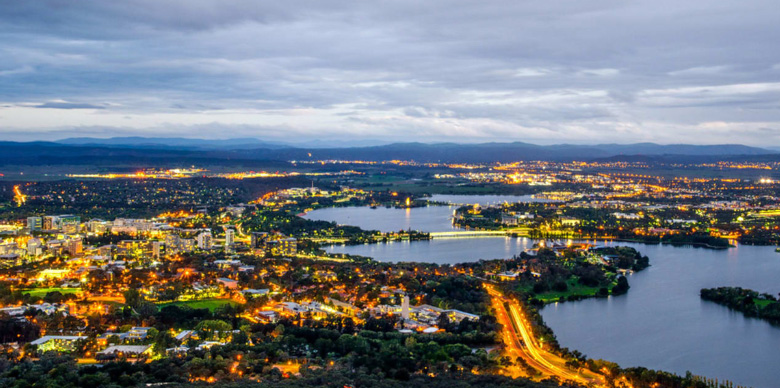
Program Status Update
The ACT Critical Skills List identifies the occupations in current demand in the ACT. This List is important if you want to apply for ACT nomination for either a:
The ACT Government will update this list every four months to make sure that the ACT Skilled Migration Program adapts and responds to the evolving critical skills needs of the ACT economy.
The Canberra Matrix is weighted to ensure that applicants who will make a positive economic contribution to the Territory and/or have demonstrated a genuine commitment to the ACT are more likely to be ranked and invited to apply for ACT nomination.
*ACT nomination does not guarantee a migration outcome. You must still meet the Department of Home Affairs criteria.
Every month, a certain number of nomination invitations are available (prorated on the annual allocation) to those working in the highest ranked Matrix in each occupation.
You can view the ACT’s most in-demand skills for skilled migration by consulting the ACT Critical Skills List.
Before submitting an EOI for The Australian Capital Territory, applicants should check that they meet all eligibility requirements.
Once you’ve submitted a valid Department of Home Affairs Skill Select EOI, follow the ACT Government Process to apply for ACT nomination.
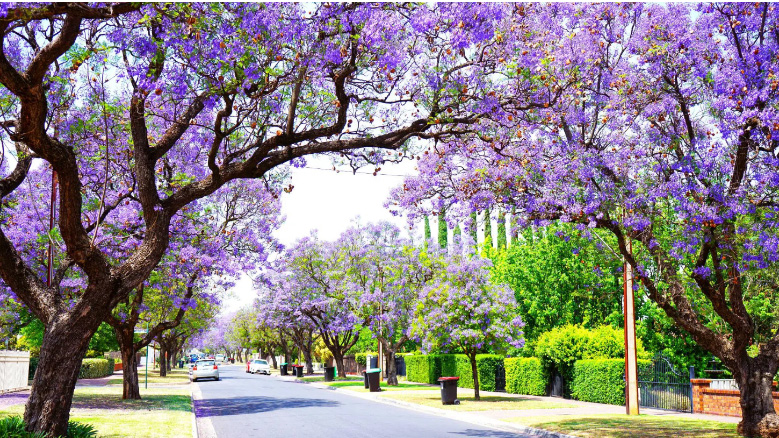
Program Status Update
To manage South Australia’s COVID recovery response, applicants currently residing offshore are able to apply.
Depending on your occupation and situation, there are two state nomination options available for skilled migrants through South Australia.
For South Australian state nomination, prospective applicants must meet the Department of Home Affairs requirements, state-specific occupation requirements and have skills in an occupation that is available on the South Australian Skilled Occupation List. Offshore applicants meeting the minimum published requirements can now lodge an Expression of Interest (EOI).
There is an enormous range of occupations on South Australia’s Skilled Migration Occupation List in a range of industries – search for your occupation here.
South Australia will increase its nominations of offshore skilled migrants in 2022-23. This is in order to make entry to the South Australian labor market faster, due to urgent skills shortages.
To do this, South Australia will select offshore applicants to apply for state nomination from those who have submitted an Expression of Interest (EOI) through Skill Select. Offshore applicants will not need to lodge a Registration of Interest (ROI) for this year’s program. South Australia will be nominating offshore applicants from over 470 occupations on South Australia’s Skilled Migration Occupation List. To be eligible, ensure all the information in your Skill Select EOI is up to date and you have selected South Australia as your first preferred state or territory to move to in Australia.
South Australia will be assessing candidates on merit by the following factors, within their nominated occupation:
Before submitting an EOI for South Australia, applicants should check that they meet all eligibility requirements.
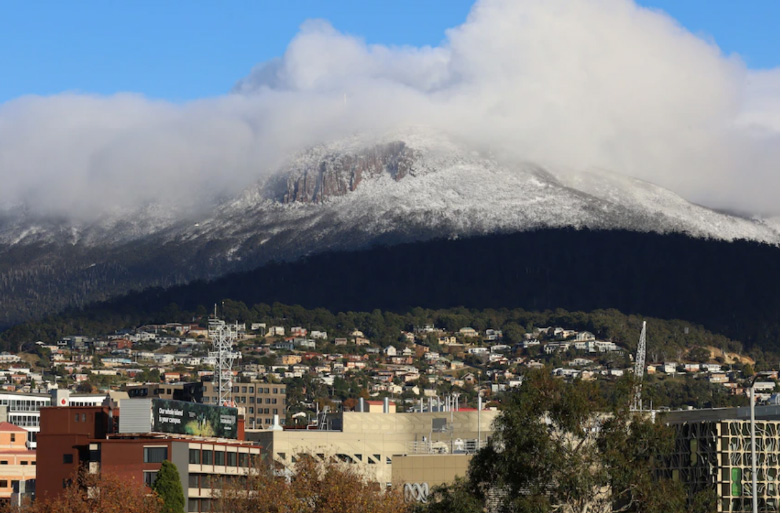
Program Status Update
Working in Tasmania
The two state nomination options available for skilled migrants through Tasmania are:
The Tasmanian State Nomination Skilled Migration Program supports Tasmanian businesses and increases the state’s working age population. It does this by attracting and retaining migrants with skills genuinely in need by employers, or with the capacity to settle in Tasmania through skilled employment in the long-term, and business activities that will increase employment opportunities.
Tasmania’s skilled migration program is for people wanting to move to the state who have skills that Tasmania need. Skilled migrants are attracted to Tasmania because of the state’s enviable lifestyle, career opportunities, affordable housing, reputable schools and a globally recognized university.
The new Migration Tasmania Application Gateway is now open!
The new Migration Tasmania Application Gateway is now open for registrations of interest (ROI) and applications for skilled visa nomination from Tasmania.
Anyone seeking Tasmanian nomination for a Subclass 190 Skilled Nominated Visa or Subclass 491 Skilled Work Regional Visa must now first register in the Migration Tasmania Application Gateway .
Before submitting an ROI for Tasmania, applicants should check that they meet all eligibility requirements for either;
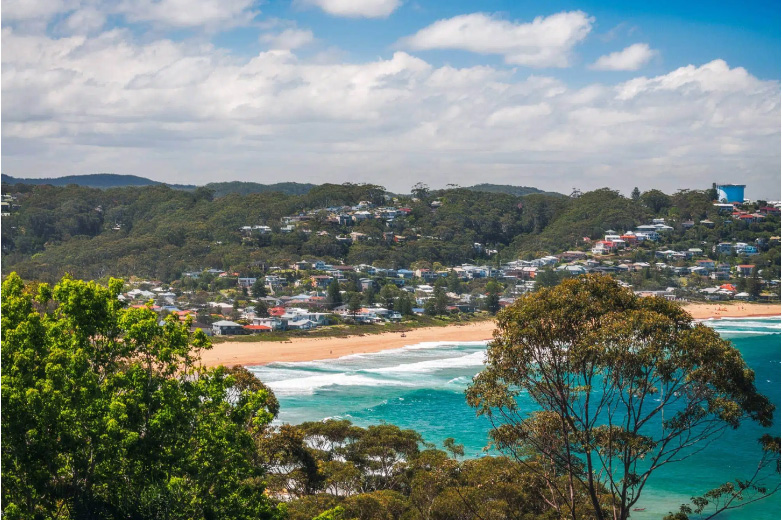
Program Status Update
The New South Wales government has invited applications from offshore migrants under the following nomination streams:
The NSW State Government announced that offshore applicants skilled in certain ANZSCO unit groups are still eligible for NSW nomination.
*Please note: Invitation rounds occur frequently throughout the financial year with no set date.
NSW invites and nominates Skill Select EOIs at the ANZSCO unit group level. To be eligible for NSW nomination (for either Subclass 190 or Subclass 491) you must be skilled in an occupation that both:
It is important to note that not all occupations within ANZSCO unit groups are eligible for the respective visa. It is the responsibility of the prospective migrant to ensure their occupation is eligible for the visa before obtaining a skills assessment.
For the 2022-23 financial year, NSW have introduced a new requirement regarding your Skill select EOI. To be eligible for NSW nomination, your Skillselect EOI must be for ONE visa and for NSW only.
This means that if your Skill select EOI has multiple visas and/or multiple states selected (this includes selecting ‘ANY’), your Skill select EOI will not be considered for NSW nomination.
The skills lists for 2022-23 are available on the Investment NSW website. Additional ANZSCO unit groups will not be added this financial year, however, the skills lists are reviewed annually.
For a further explanation of how the skills list works, see the Common questions about skilled visas page on the NSW Government website.
Before submitting an EOI for New South Wales, applicants should check that they meet all eligibility requirements for either;
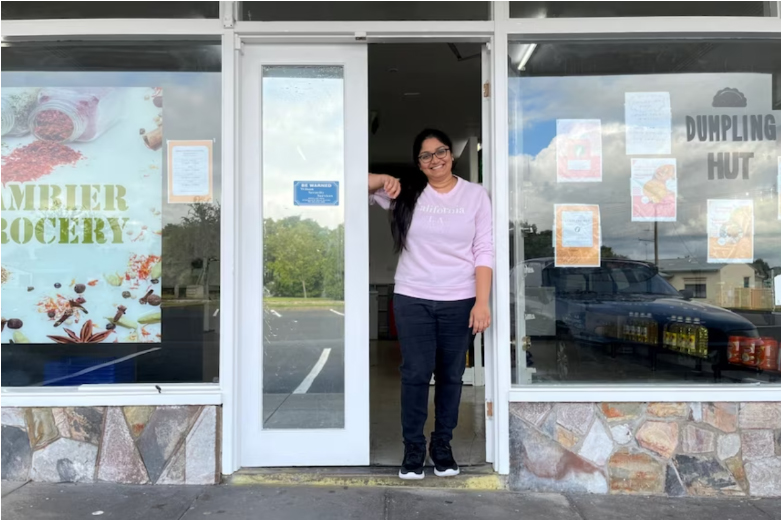
The number of Indian-born people moving to Mount Gambier is on the rise, providing opportunities for local businesses and the first daily prayer meetings for a local Sikh temple.
About 100 Indian-born people lived in Mount Gambier in 2016, according to the Census done that year, and about 150 in 2021.
But the manager of the city’s first Indian supermarket says the number could be much higher now because of the 491 visa scheme, introduced in 2019 to encourage skilled workers to settle in areas outside of Australia’s largest cities.
Mount Gambier Indian Grocery manager Juby Baby said the visa program was what attracted her, and her husband Elben Benny, to South Australia’s second largest city in the first place.
They liked the place and stayed.
“We came to Australia in 2018, we were in Melbourne, but then we moved to Mount Gambier [in 2021], same like all others for visa purposes,” Ms Baby explained.
“But after moving we found this place is very quiet, no traffic, very lovely people.
“We’re so happy — I’ve got this international family here in Mount Gambier.”
Mount Gambier and the surrounding area has a population of almost 30,000 and is located halfway between Adelaide and Melbourne — both cities with a large Indian population.
Ms Baby opened her supermarket last Saturday and is backed up by business partners in her husband Elben Benny, local Jeni Jackson and Sunny Li, who is running a dumpling takeaway business from the same premises.
Ms Baby said many Indian people regularly drove to Melbourne or Adelaide to pick up their favorite products, but it was getting expensive.
“We have to take the day off, we have to pay for the fuel, we have to book accommodation, it’s really hard,” she said.
“Everyone is going through the same situation. That’s why we thought it would be good if we had one here.”
Twice-daily Sikh prayer meetings have recently begun in Mount Gambier at a gurudwara, or temple.
The morning and evening prayer sessions are led by Harjit Singh, a Sikh preacher originally from India.
The temple is run by Amandeep Kaur, who moved to Mount Gambier in 2019, and decided to open up her house as a place for Sikhs to meet.
Ms Kaur said anyone could visit the gurudwara in Wehl Street South.
“We are trying to create a place where a lot of silence and piousness would be offered,” Ms Kaur said.
“It doesn’t matter which community, which religion, where you come from, you can still come up and sit and use the space to meditate and try and understand how the world came into existence.”
Special prayers are offered on Wednesdays, after which people visiting can join in meditation and share free food in silence.
Good facilities for families
Mount Gambier has three Indian restaurants, including one which an Adelaide-based owner took over in 2021 with the hope of capitalizing on the increased Indian population in the city, as well as tourists coming to visit.
Mount Gambier Indian Restaurant assistant manager Kulbir Kaur moved to the city in January and said even since then, she had noticed more Indian-born locals.
Like other Indians, she said she moved to Mount Gambier to take advantage of the 491 visa while also enjoying a good lifestyle.
“Mount Gambier is a place, especially if they have children, where they can get more facilities rather than being in regions or towns,” Ms Kaur said.
“So, for me, if I talk of myself, I have two children – one is two and one is four years old – so they can have proper schooling, they can learn swimming, they can have all the facilities here, so … they can go for whatever is required like gym or whatever.
“The Marketplace [shopping center] is there so if they need to buy something they don’t have to go far, so that’s why they choose Mount Gambier rather than small places.”
She said sometimes there were so many customers on long weekends that there was no room in the restaurant or food left.
Indian-born tourists especially came on long weekends from Adelaide and Melbourne, she said.
New housing development
Two Indian-born property developers have recently bought tracts of land on Mount Gambier’s outskirts to develop into housing.
Already, plans for about 200 blocks have been lodged with the two local councils.
Sydney-based Ram Vel and Satya Gala bought the land sight unseen in 2021, when there were restrictions on people travelling to South Australia from NSW and Victoria because of COVID-19 outbreaks in those states.
Two of the planned housing estates, which are open to anyone to buy into, are near the University of South Australia campus in Mount Gambier’s north.
Mr Gala said they chose to invest in Mount Gambier for its tourist attractions and facilities, such as schools and the hospital.
He said the future homes would end up in a mix of investors’ and local families’ hands.
“As long as a developer has a sense of giving back to the community, I think a meaningful and profitable business can be achieved wherein the community is always at the front end of receiving, rather than just taking from a community for a business,” Mr Gala said.
He said the houses built would be “simple” to keep costs down.
“We’re always mindful of the cost so that we don’t add any more pressure onto the buyers to buy,” he said.
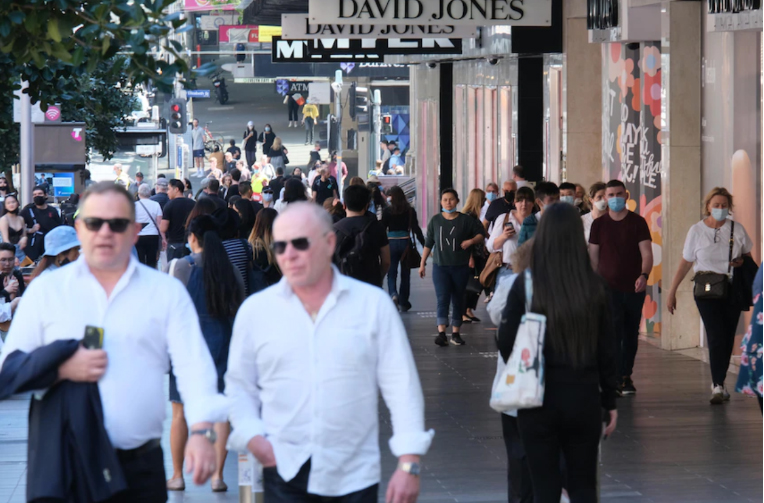
The chief economist of the Regional Australia Institute says the federal government needs to ensure enough overseas migrant populations are flowing into non-metropolitan areas.
Last week’s release of the federal government’s 2022 population statement projected that fewer than 17 per cent of net overseas migration would flow to regional Australia in the coming year, whereas the RAI believes the government should be setting a target of 40 per cent.
The independent think-tank says the dispersal of immigrants into the regions will bring greater productivity, help fill significant job shortages, boost infrastructure as well as buffer some areas from population decline.
The organization’s chief economist Kim Houghton said the COVID-19 pandemic had shown how the country could be negatively affected by a lack of international migrant professionals.
“The worker aspect is one that has become very stark over the last couple of years,” Dr Houghton said.
“That flow of people — whether they are backpackers or migrants — has become really important to regional communities.
“It’s not always visible and that is why it took some of us by surprise.”
He said overseas migrant professionals would still be the single biggest driver of population growth over the next 10 years.
“It has been like that for a long time — we’re not making babies locally, so that flow-on has a real impact.”
Councils also lobbying
In Victoria, the Regional Australia Institute (RAI) forecasts suggest about 7,000 people will migrate to regional Victoria each year for the next four years, compared to 70,000 to Melbourne.
It is predicted that by 2032-33, without net overseas migration, regional Victoria’s population would be in decline due to reduced birth rates.
Victoria’s west is well-acquainted with the challenges of attracting enough people to live and work locally.
A report released last year centered on the Northern Grampians, Pyrenees and Ararat areas found future population growth would be heavily reliant on migration.
Northern Grampians Shire mayor Kevin Erwin said Australia’s current migration policy focused on highly skilled migration, which was only sometimes what the regions need.
The report also found that backpacker visas excluded tourism and hospitality, a vital part of the local workforce.
“We have certainly tried to get those two [sectors] onto the 80-day 417 backpacker visas, and the Halls Gap and Great Western postcodes need to be included as well,” Mr Erwin said.
“We’ve sent a letter off to Home Affairs trying to get that change.”
Skills shortage
Recent data shows country Australia reached record high job vacancies in late 2022.
Last year, the RAI submitted suggested key policy changes to the federal government.
These included developing mechanisms to raise awareness of regional Australia among migrants in capital cities; supporting local settlement assistance to newly arrived migrants in regional areas; and setting a population target for regional Australia of 11 million by 2032.
To address skills shortages, 12 areas of regional Australia have also entered into Designated Area Migration Agreements (DAMAs) with the federal government.
The decision on whether to initiate DAMAs rests with local councils, chambers of commerce or Regional Development Australia offices.
A spokesperson for Immigration Minister Andrew Giles said backpackers holding 417 visas could already choose to work in any industry they desired,
“[They] can count tourism hospitality and work carried out from June 2,2 2021 in northern and very remote areas of Australia as specified work” to apply for a second or third visa, the spokesperson said.
“The department is enhancing its outreach and engagement capability to support delivery of its migration program and support businesses to meet their migration needs.”

The Housing Industry Association has called on the federal government to develop clear policies on migration to give the housing industry certainty on future demand and the supply of skilled labor.
In its Federal Budget submission to the federal government, HIA is urging government consult with industry to develop a visa that will enable the residential building industry to alleviate trade shortages through skilled migration.
“Recent population growth directly links to our housing needs. Without a clear policy on skilled migration for both the short and the long term, it is extremely difficult for the home building industry to prepare and meet the demand for housing which is already at crushing highs”, said Jocelyn Martin deputy managing director, industry and policy at the HIA.
“Population growth has always been a fundamental part of Australia’s economic and social development, with growing migration to Australia, governments need to devise a targeted policy that attracts skilled migrants to work in the building sector if we are to have any hope of building the required number of homes needed to house our growing population,” said Ms Martin
“Australia is experiencing a relatively fast rate of population growth. There are extensive economic benefits to a healthy immigration intake, particularly in terms of ensuring we have adequate working age people against a backdrop of Australia’s ageing population.
“And there is an important role for skilled migration to increase skilled trades workers, particularly where acute demand emerges as is presently the case.
“But the residential building industry requires migration pathways to enable the long-term structural shortage of workers to be addressed through permanent migration.
“Growth in Australia’s population is essential for the economy to thrive, but at the same time, we must ensure that that growth is accompanied by sufficient housing supply to meet growing demand.”

A radical overhaul of the way Australians work could be hitting our shores much sooner than expected.
Australians and international migrants could soon be saying goodbye to the traditional five-day work grind, with momentum gaining for a radical change to the workplace.
Just over a third of Australian companies expect their organization will transition to a four-day work week within the next five years, new research has revealed.
In a surprising result, more than seven-in-10 Australian employers would support a four-day work week for their staff due to concerns about attracting and keeping staff, with the move seen as a way to compete for top talent.
Another 37 per cent of companies said they might transition to the shorter working week within the next five years, the research from recruiter Robert Half revealed.
Yet, just over a quarter of employers do not believe a four-day work week is likely.
Large employers are more apprehensive, with only 27 per cent believing the four-day work week will occur within the next five years while 30 per cent are not planning to implement the change.
Influences that could push employers to make the move include employee requests or positive staff feedback, business results, whether changes to operations will allow it and if their competitors are doing it, the research showed.
About a quarter of employers believe a skills-short market will also play a role in their decision.
Companies have embraced remote working as a result of the pandemic, but there are also opportunities to offer the flexibility their teams request while also supporting culture, collaboration, and efficiency, said Robert Half director Nicole Gorton.
“Flexibility has never been so important to the modern day workforce. Granting individuals the freedom to establish their own schedules exemplifies a sense of trust and can be seen as companies taking the next step to transform the way we work to foster sustained work-life harmony,” she explained.
“With candidates placing flexibility in their top priorities, offering a four-day work week helps attraction and retention efforts, while also contributing to staff morale and productivity.”
Ms Gorton said four-day work week trials across the globe had found success but implementing the change was not a one-size-fits-all scenario.
“Potential pitfalls include longer days, which may lead to burnout or employee dissatisfaction as well projects and products taking longer to complete,” she said.
Alternatives could be offering other flexible benefits like remote working options or early finishes to attend to personal commitments, Ms Gorton added.
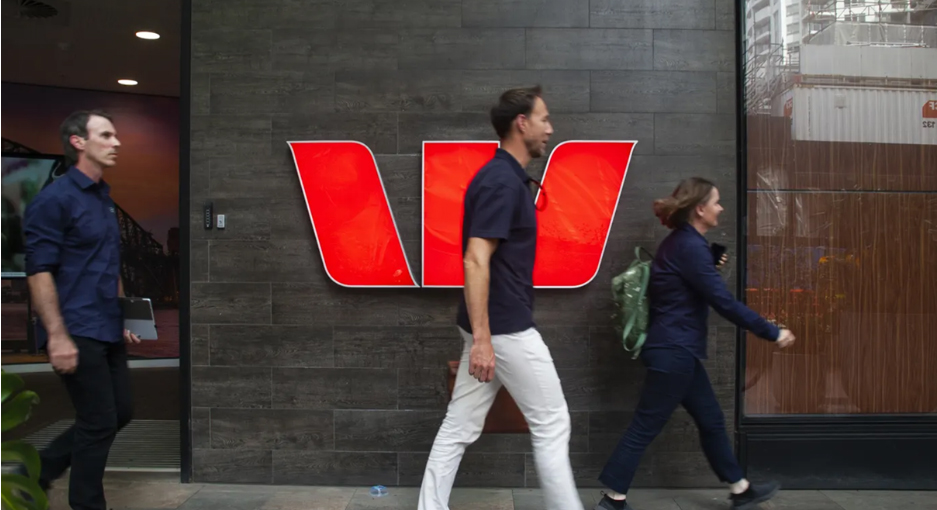
Westpac bank is confident that higher net migration will lift foot traffic in retail areas, helping to maintain business credit growth this year.
Westpac says business lending growth is set to slow sharply to between 3 and 4 per cent this year, down from the 14 per cent growth recorded last year, but will still be supported by higher-than-expected net migration this year from the return of migrants.
Business credit last year was boosted by businesses stocking up on inventory to avoid supply chain chaos.
Shane Howell, Westpac’s managing director of business lending, said he expects inventory levels to drop from 20-year highs after many companies overbought to lift stock as supply chains took time to recover from the disruption of the pandemic.
Amid soft consumer sentiment – which is likely to remain depressed as mortgage repayment costs increase – SMEs should “deplete some of that inventory, and that is an area we will need to watch closely,” he said, given it could reduce demand for working capital.
However, Westpac said new migrant arrivals into Australia, combined with moves to bring some manufacturing processes back to Australia, will underpin decent business credit growth across the economy of 3 to 4 per cent for the financial year to September.
Treasurer Jim Chalmers said last week net overseas migration could be higher than the 235,000 forecast for 2022-23 and 2023-24 in October’s federal budget, as former Immigration Department deputy secretary Abul Rizvi suggested a figure of 300,000 was probable.
“There is still growth in the market and many things are driving it forward,” Mr Howell said. “Obviously, there is inflation, but also net migration, which might top 300,000 – which will drive demand and help with labor shortages.”

International students are rushing back to Australia with numbers in the peak January-to-March arrival period nearly 150 per cent higher this year compared to 2022.
Australian Bureau of Statistics figures released on Thursday show that 256,170 people arrived in the country on student visas from January to March this year, compared with 105,520 students arriving on student visas in the same period in 2022.
Both these figures stand in sharp contrast to the 790 people who entered Australia on a student visa in the first three months of 2021 during the Covid border closure.
The data is the latest indication that the international student business, which at its peak in 2019 earned $40bn in export revenue, is rebounding sharply.
Universities Australia acting CEO Peter Chatsworth said education was a serious driver for the economy. “We are steadily working back to the position of strength we held prior to the pandemic. The sooner we get there the better for the benefit of our universities and all Australians,” he said.
However international student numbers still have some way to climb before they reach the record level set in 2019, the year before the pandemic.
According to the ABS the 256,170 students arrivals in January to March this year (the number is still provisional) is still 24 per cent below the 346,310 students who arrived from January to March in 2019.
The ABS figures also show that 425,920 students arrived in Australia in 2022, up from only 32,940 in 2021. However, the 2022 student arrivals are only about half of the record 842,990 students who arrived in 2019.
Education export revenue is also well behind the $40bn recorded in 2019. In 2022 it was only $25.5bn.
International Education Association of Australia CEO Phil Honey wood said it was not surprising that student numbers were growing fast because of pent-up demand for study in Australia. “Going forward, we should still be the beneficiary of challenges faced by competitor markets, but we have our own challenges to contend with such as accessible accommodation and education agent bad behavior,” he said.
In February this year, 77 per cent of arrivals were higher education students, 9 per cent were in vocational education and 4 per cent English language courses.
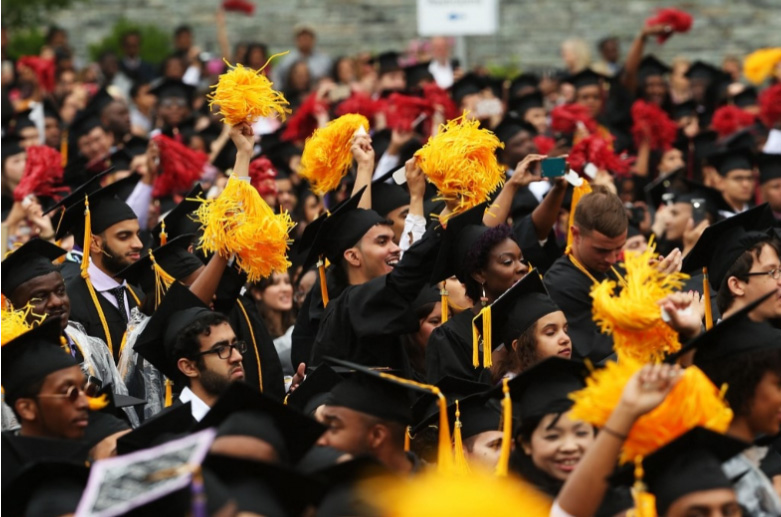
Medicine, computer science, law, engineering — these are what often come to mind when you talk about the highest-paying degrees for international students.
But that’s a narrow view.
There is an alternative list of the highest-paying degrees for international students who return to their home country to work or stay abroad.
Many would say these are some of the “easiest” degrees to pass.
There’s some truth in that but only if it is “easier” in the sense that it requires less memorizing (like medicine and law) and fewer math’s (like computer science and engineering).
Remember that determining if a course is “easy” is subjective and would depend on a few factors such as your likes, dislikes, interests and capabilities. What may be easy for you may not be for others.
The following may seem like the easiest degrees that lead to the highest-paying jobs for international students at first glance, but a closer look tells us something else.
They require many soft skills that the World Economic Forum has listed as the top 15 skills by 2025:
Thus these following degrees may be perceived as easy for those who are math-and-memory-challenged, but do well with people.
For an introvert, however, they may be the hardest thing he’ll ever have to do. For someone who is bad with technology and stress, it will be tough too.
Ultimately, how easy or how hard a degree feels will depend on you, your interests and your talents.
The following list of the easiest degrees that lead to the highest-paying jobs for international students, however, are chosen for:
Five highest-paying degrees that are the “easiest” for international students
1. Business Administration
When it comes to business degrees, a bachelor in business administration is considered one of the most basic and easiest degrees to complete.
This program me aims to equip students with the comprehensive skills and knowledge needed to operate and grow an organization successfully.
As part of the course, students will cover an assortment of topics, from finance and accounting to human resources. This course is considered easier than other undergraduate programmers as students will not need to specialize in a specific field.
A degree in business opens the doors to many possibilities. Graduates will have the privilege of choosing between many career opportunities across various fields. This includes jobs as an accountant, financial analyst, HR specialist, marketing manager and many more.
But don’t be fooled. Just because it is easy does not mean you won’t land a high-paying job. This degree is a popular choice among many students as graduates can earn up to US$111,902 per year.
Arm yourself with a bachelor in business administration from some of the top universities in the world to secure a high-paying job. These universities include:
2. Human Resources
If you enjoy solving problems and coming up with solutions, then a degree in human resources is perfect for you.
Pursuing your higher education studies in human resources is considered easy by many as you get the qualification and high-paying jobs sans having to do math or science.
This course will prepare you to work in the human resources department, where you will help the business and employees work through payroll, personnel problems, laws and many more.
The best part is that securing a job should be relatively easy as every company and organization has an HR department, and experts in the field are always in demand. A human resource manager earns up to US79,449 a year in the US.
And if that doesn’t interest you, do not worry. With a bachelor’s in human resources, there are many other career paths to choose from that can still secure you a high salary.
These roles include becoming a training and development manager, labor relations specialist, compensation and benefits manager and many more.
Consider these top universities if you want to pursue a bachelor’s degree in human resources:
3. Marketing
Marketing also makes the list of highest-paying degrees for international students. This degree is a popular choice of study for students who have a passion for advertising, social media and graphic design.
Those interested in studying marketing have two options when pursuing this degree. Students can choose to earn their qualification through an associate’s degree which is a two-year degree course, or they can earn a bachelor’s degree, which typically takes around three to four years to complete.
The associate’s degree offers students the opportunity to complete their degree in a shorter time and enter the working force quicker to get a head start at their careers.
When it comes to career opportunities for those with a marketing degree are endless.
Marketing graduates are able to work in just about any industry, as almost every business, organization, and nonprofit around the world needs a marketing team.
Those with a marketing degree can pursue jobs as a social media manager, marketing executive, sales representative and marketing research analyst, securing a salary of up to USD$65,697 annually.
If you are considering a degree in marketing, here are the best universities in US, UK and Australia to do so:
4. Nursing
If you are interested in the healthcare industry but don’t want to spend four years training to become a doctor, then nursing is the route for you.
You will be happy to know that a degree in nursing can lead to a high-paying job of up to US$92,686 annually.
This course of study is one of the most popular among students as you are able to immediately begin applying your skills once you graduate.
While not the easiest academic route, a diploma or bachelor’s in nursing is nowhere near as difficult as medical school. (A career in nursing may be just as demanding yet fulfilling.)
As a nurse, you don’t have to worry about employment as the demand for nurses is increasing, and you are guaranteed to find employment.
Australia is currently facing a shortage of nurses and is in need of about 100,000 nurses. The US is not far behind, with about 203,200 openings every year. These numbers are expected to increase in the next decade.
So if you have been considering a career as a nurse, there is no better time to do so than now.
With a degree or diploma in nursing, you will be eligible for roles as a clinical nurse specialist, community nurse, child care specialist, private nurse or social worker.
If you are interested in pursuing an education in this field, here are the best universities in the world to do so:
5. Culinary Arts
If you have a flair for cooking and creating mouth-watering dishes, consider pursuing a degree in culinary arts that will not only secure employment but a high-paying job as well.
Chefs are currently in demand, so you do not have to worry about securing a job. According to the Bureau of Labor Statistics, the number of jobs for chefs and head cooks is expected to increase by 15% by 2031.
In the US, chefs earn around US$51,972 annually. And if that isn’t enough to convince you, just think about all the delicious food you will enjoy as you cook.
Here are some of the top universities to pursue a degree in culinary arts:








There were 10 magical nights of light installations from a number of Aboriginal artists set against the majestic MacDonnell Ranges at the Parrtjima -Light Festival ! Alice Springs, Northern Territory. April 2023
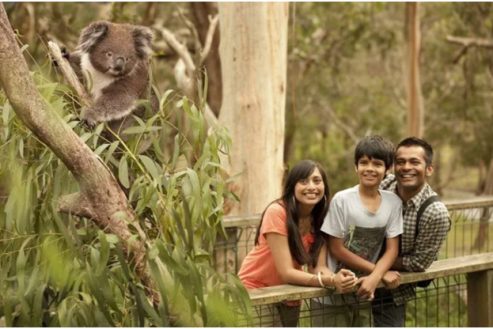
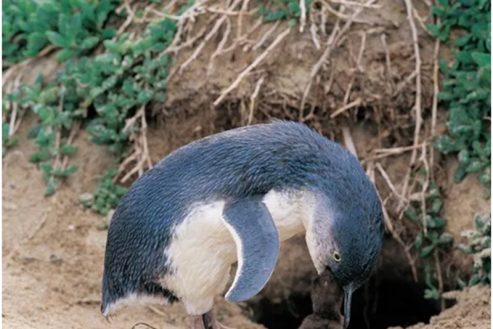
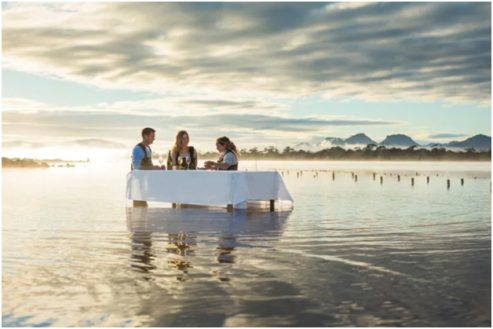
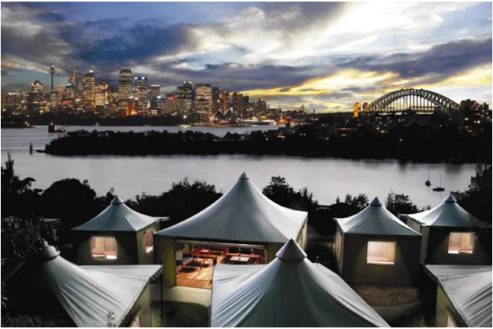
This Bulletin and its contents is for general information purposes only and should not be used as a substitute for consultation with professional advisors.
As legislation and travel requirements are constantly changing, we strongly recommend obtaining advice on your individual situation from a Registered Migration Agent. Please click here to book a consultation with one of our Registered Australian Migration Agents, located in Australia.






You can manage your membership and billing method by clicking here
Terms of Service
Privacy Policy
Copyright © 2025 Office of Immigration Australia, a private company registered in Australia. All Rights Reserved.